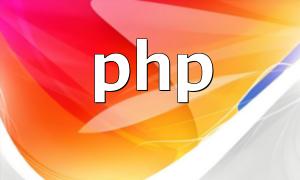With the rapid growth of the internet, website loading speed has become a crucial factor in user experience and search engine ranking. As one of the most widely used backend languages, PHP’s coding standards and performance optimizations play a vital role in determining how efficiently a website performs. This article explores how to combine clean coding practices and optimization techniques to enhance website performance.
Writing clean and maintainable code is the foundation of efficient PHP development. Adhering to consistent coding standards improves readability and makes future optimization easier.
Optimize Code Structure:
Make Full Use of PHP Built-in Functions:
Leverage Caching Wisely:
Performance optimization directly affects how fast a PHP-based website loads and responds. The focus should be on minimizing database queries and optimizing file operations.
Reduce Database Queries:
Example: Using Indexes for Query Optimization
// Create an index
CREATE INDEX idx_name ON users (name);
// Query using the index
SELECT * FROM users WHERE name = 'John';
Example: Join Query Example
// Perform a join query
SELECT orders.order_id, customers.name
FROM orders
INNER JOIN customers ON orders.customer_id = customers.customer_id;
Using ORM frameworks like Laravel’s Eloquent simplifies database interactions, reduces repetitive SQL writing, and improves maintainability.
Example: Eloquent ORM Usage
// Define the User model
class User extends Model {
protected $table = 'users';
}
// Fetch user list
$users = User::where('age', '>', 18)->get();
Frequent file read and write operations can become a performance bottleneck. The following methods help reduce such overhead:
Example: Merging CSS and JavaScript Files
<!DOCTYPE html>
<html>
<head>
<link rel="stylesheet" href="styles.css">
<script src="scripts.js"></script>
</head>
<body>
<!-- Web page content -->
</body>
</html>
By adhering to PHP coding standards and applying effective performance optimization techniques, developers can significantly enhance website speed, stability, and scalability. Proper caching, optimized database queries, and minimized file operations are essential for achieving high performance. Choosing the right optimization strategy based on project scale and business requirements ensures PHP applications run smoothly and efficiently.









